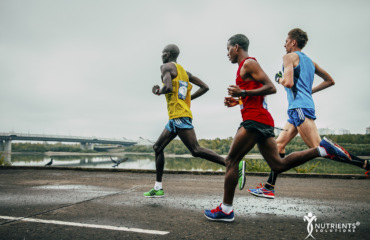Wellness Demystified: We Can Help You Discover Optimum Health
How to Prevent Shin Splints When Running

Accounting for up to 17% of all running-related injuries, shin splints are an all-too-common condition from which runners suffer. This article offers an in-depth look at shin splints, including what causes them, how to treat them, and what runners can do to prevent them. Whether you’re a seasoned marathon runner or someone who enjoys an occasional jog around the neighborhood, you should familiarize yourself with these tips.
Running is a fun and rewarding exercise that burns fat, improves lung function, reduces stress, and even protects against heart disease. Like all athletes, however, runners are susceptible to different types of physical injury. In fact, statistics show up to 65% of all runners will be injured in any given year. Other statistics suggest the average runner will sustain one injury for every 1,000 hours he or she runs.
One of the most common injuries sustained by runners is shin splints. Also known as medial tibial stress syndrome (MTSS), it accounts for 13% to 17% of all running injuries. Shin splints are characterized by throbbing, sharp pain in the tibia (shin). While anyone can develop shin splints, they are most common among runners due to the constant stress and pressure placed in the tibia.
What Causes Shin Splints?
The term “shin splints” refers to any pain-inducing injury of the tibia. Typically, this is caused by micro-sized tears in the muscle or bone tissue. When running, the weight of your body is placed on your legs with every step you take. Over time, this stress creates tiny tears in the muscle and bone tissue, resulting in shin splints.
The good news is shin splints typically heal without the need for medical assistance. The bad news is it can be quite painful in the meantime. So, how can you prevent shin splints when running?
1.) Wear the Right Shoes
Wearing the right running shoes can help protect you from shin splints. A pair of fitted athletic running shoes with a supportive insole, for instance, will absorb pressure, while taking some of the stress off your tibia.
Keep in mind that most running shoes have a lifespan of approximately 300 to 500 miles. Over time, running shoes lose their ability to absorb shock. And once they reach the 500-mile mark, they typically lack the support needed for medium- to long-distance runs, increasing the risk of shin splints and other related injuries.
If you need help choosing a new pair of running shoes, visit an athletic apparel store and ask for help. After analyzing your foot type, size, and gait, they’ll point you in the right direction.
2.) Run on Soft and Hard Surfaces
Not surprisingly, running on hard surfaces has been linked to an increased risk of injury. Whether it’s concrete or asphalt, the hard surface places additional pressure on your legs, which can lead to shin splints. This doesn’t necessarily mean you should avoid running on hard surfaces, but rather diversify your running environments by including both hard and soft surfaces in your routine.
Soft surfaces include dirt, grass, sand, crumb rubber, and wood chips. Because these surfaces are more sponge-like, they are more effective at absorbing shock and reducing the risk of shin splints.
3.) Take Days Off to Rest
You can also reduce your risk of developing shin splints by taking days off to rest. Because running is a form of aerobic exercise, and not resistance training, some people assume it’s okay to run every day of the week. Doing so, however, only increases the risk of injuries like shin splints.
Your body needs to time to repair the tissue damage it sustains when running. If you run on Monday, wait until Wednesday before hitting the pavement again.
4.) Land on the Middle of Your Foot
Which part of your foot do you strike when running? Landing on your heel causes your front toes to hit harder; thus, stressing the tibia muscles. But landing on your toes is also bad because it stresses your calf muscles. This is why most running coaches recommend landing on the middle of your foot.
Of course, changing the way you land isn’t always easy. If you’ve been landing on your heel for the past 20 or 30 years, alternating to a mid-foot landing may seem unnatural and awkward. If you’re unable to adjust, try practicing in your living room. With practice and dedication, you’ll eventually master the mid-foot landing.
5.) Warm Up Before Running
Try to get into the habit of warming up before you run. A proper warmup routine gets blood pumping through your body and fuels your muscles with more oxygen and nutrients. It also helps by stretching your muscles, making them less susceptible to injury.
Some warmup exercises to consider include the following:
- Lunges
- Toe raises
- Side bends
- Forward bends
- Thigh stretches
- Calf stretches
6.) Take Shorter Strides
While long strides can yield a faster running speed, it also increases the risk of shin splints by stressing the muscles in your lower leg. And when enough stress occurs here, it can lead to painful injuries, including shin splints. Taking shorter strides, on the other hand, minimizes stress on the lower leg muscles and reduces the risk of injury.
It’s difficult to run when you suffer from shin splints. The micro-sized tears in the muscle and bone trigger sharp pain with every step you take. Thankfully, you can avoid this type of injury by following the tips outlined here.


© 2019 Nutrients Solutions, LLC. All rights reserved. Disclaimer: The information provided is for educational purposes only and does not constitute medical advice. Always seek the advice of your physician or qualified healthcare provider with any questions or concerns about your health. Check with your doctor before beginning any exercise program. Never disregard or delay seeking medical advice because of something you have heard or read in this article or the internet.












